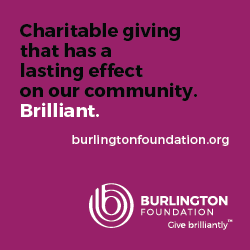March 30th, 2024
BURLINGTON, ON
The rarity of a total solar eclipse, set to take place over Niagara and select areas across North America April 8, can be better understood by breaking down the math and science involved, says a Brock University expert.
The celestial phenomenon, in which the moon completely blocks the sun and turns the daytime sky dark enough to see stars for several minutes, will be a once-in-a-lifetime experience for many who witness it next month.
Jan Vrbik, a Professor of Mathematics who studies the movement of the sun, planets and moons, says there are four factors that make witnessing a total solar eclipse quite rare.
The distances of the sun and moon from the Earth
Even though the sun is 400 times larger than the moon, when we look at them in the sky, they appear to be practically the same size. This is because their distances from Earth are roughly in the same 400 to one ratio.
It’s why the moon can obscure the sun, either partially or fully, to create a solar eclipse.
The tilt of the moon’s orbit
The moon’s orbit around the Earth is not a perfect circle — it’s an ellipse — so the distance of the moon from Earth fluctuates depending on where it is along its orbit.
It varies by 11 per cent each month, which implies that the moon’s disk also fluctuates in size compared to the sun.
About 35 per cent of the time, the moon’s disk is bigger than the sun’s disk, and the other 65 per cent of the time, it’s the reverse.
The intersection of the sun and moon’s orbits
The Earth orbits the sun once a year, while the moon circles the Earth once a month. If the sun and moon’s orbits were on the same plane, an eclipse would happen every month, but the moon’s orbit is tilted by about five degrees from the sun’s orbit.
This means that at most new moons, the moon is either visibly higher or lower in the sky than the sun. Nevertheless, the moon needs to cross the plane of the sun’s orbit twice during its monthly cycle, at an intersection called a ‘node.’ Eclipses happen only when, during a new moon, the sun’s direction is closely aligned with one of these nodes, which happens regularly twice a year.
He says 23 per cent of solar eclipses are ‘total,’ when the moon fully covers the sun, and 42 per cent are ‘annular,’ when the moon’s disk is smaller than the sun’s disk and a ‘ring of fire’ is seen.
Thirty-five per cent of solar eclipses run so much off the Earth’s centre that only a partial eclipse is observed on one side of the globe — with the actual path of totality missing the Earth entirely.
The moon’s shadow along the path of totality
For both an annular and total solar eclipse, the moon’s shadow needs to cross the Earth’s surface.
The size of the moon’s shadow varies depending on how close in time the event is to when the moon is at its closest to Earth. Typically, the shadow is 150 kilometres (km) in a circular area. A much larger part of the Earth’s surface, about 7,000 kms across, will at the same time experience a partial eclipse, in which only a part of the sun’s disk is covered by the moon.
The shadow’s path across the globe is a combination of the moon’s straight-line motion of about one km per second and the Earth’s rotation of close to 0.5 km per second, complicated more by the fact that the Earth’s axis is tilted.
If people are in the right place at the right time, they can witness a total solar eclipse for three to four minutes.
Adding it all up
When one considers the movement of the sun, the Earth and the moon, as well as their orbits, speed, distance and alignment from each other, it is easier to understand why a total solar eclipse is so rare.
While a total solar eclipse occurs on Earth every 18 months, it usually occurs over water. The last time a total solar eclipse occurred over Ontario was in 1979. The next one won’t happen again over the province until 2099.
If you know the length of each celestial body’s cycle, you can easily predict when an eclipse will happen again. Experiencing a total solar eclipse from a specific location is a rare privilege, typically separated from the next such occurrence by several centuries.
 Vrbik will be among a group of Brock experts leading discussions and educational exhibits around the solar eclipse during ‘Eclipse on the Escarpment,’ a free community event being held on Brock’s main campus Monday, April 8.
Vrbik will be among a group of Brock experts leading discussions and educational exhibits around the solar eclipse during ‘Eclipse on the Escarpment,’ a free community event being held on Brock’s main campus Monday, April 8.
























I agree its rare, I would say those that are in the area that can view it are lucky and fortunate in a statistical sense. Others will travel to view it at some, or great expense. However, “privilege”, is a word that gets thrown around a lot these days from a societal and cultural perspective, and it strikes me as an interesting use as it does not fit the definition, only if one really tries to stretch that definition.
Editor’s note: Right on with the use of the word “privilege” coming from an academic made it all the worse.